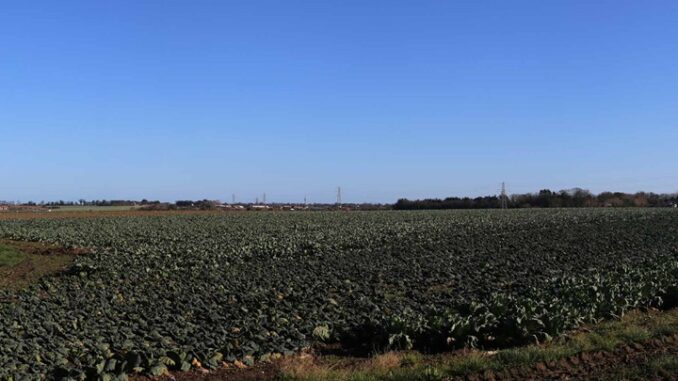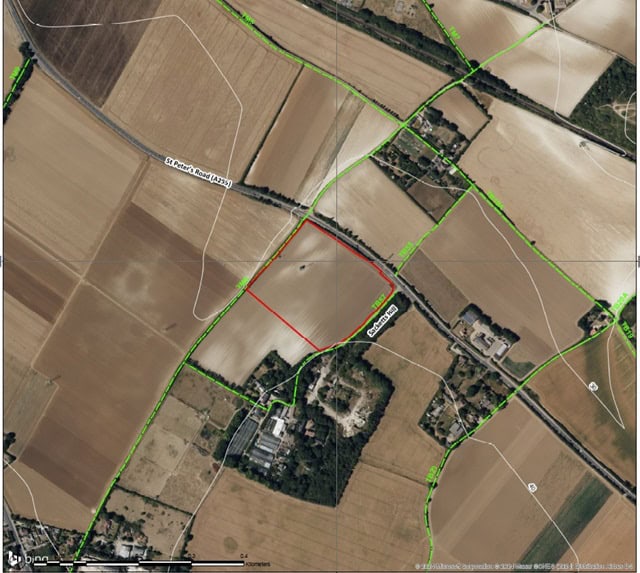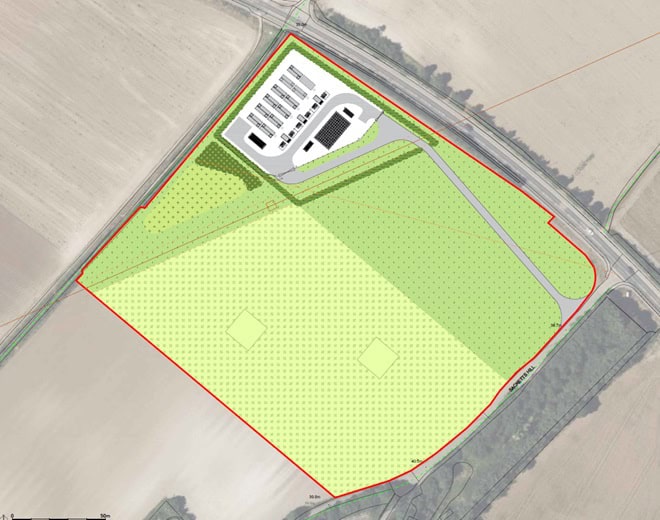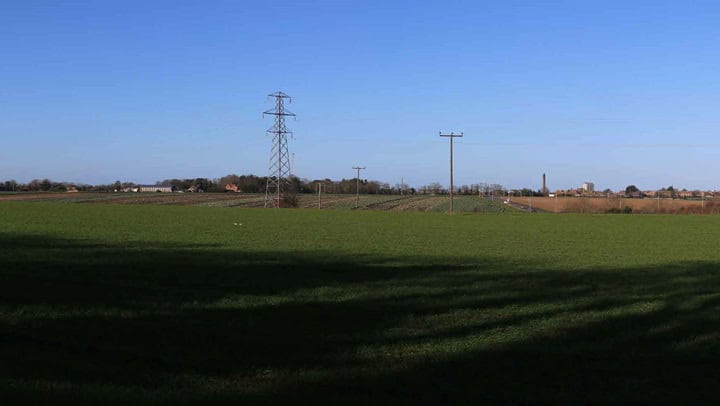
Thanet council has refused permission for a 22MW Battery Energy Storage System (BESS) and infrastructure on agricultural land at Sacketts Farm in Broadstairs.
The application from Greenfield, one of Europe’s largest owners and operators of renewable energy assets, proposed:
- To install 22 batteries, these would be situated within shipping containers arranged pairs. The batteries would measure 3m high, 1.8m wide and 8m long.
- A substation measuring 4m high, 10m long and 3.5m wide located southwest of the batteries.
- Six DC combiner boxes measuring 1.5m high, 1m wide and 1m long
- Six power conversion system units measuring 3.5m high, 3m wide and 3m long
- Three BESS Transformers measuring 3.5m high, 2.5m wide and 5.4m long
- Noise attenuation fencing with roofs around these units.
- A fire water tank measuring 2.2m high, 3.6m wide and 10m long,
- Fire water pump house measuring 3m high, 2.4m wide and 6m long
- Storage container measuring 3m high, 2.4m wide and 6m long
Greenfield’s application says: “BESS is an efficient way to store energy for domestic, commercial and infrastructure projects. It is the solution for providing a steady flow of electricity at all times.
“Renewable energies are currently unstable without the support of BESS in place. This proposal will have the capacity to store up to 22MW of clean, renewable energy generated by sources such as solar, and in turn, reinforce the local grid network.”

The aim was for the battery system to be in place for up to 40 years, at the end of which it would be decommissioned the land would revert to agricultural use.
However, the site lays within a Green Wedge area as well as on grade 1 farmland.
Thirteen objections were received, including from Broadstairs and St Peter’s Town Council who said it went against the Local Plan and CPRE Kent which raised numerous concerns including the use of Green Wedge, Loss of Best and Most Versatile Agricultural Land (BMV) and ecological impact.
The submission says: “CPRE Kent recognises the need to adapt the electricity transmission network as part of the move to more sustainable generation methods, this should be with schemes that minimise landscape impacts, secure real nature recovery opportunities and enjoy the support of local communities. Schemes that fail to meet these expectations should be refused as the need for energy does not justify damaging developments.”

The Broadstairs Society also objected, highlighting the concerns contained in the CPRE submission.
Kent County Council biodiversity raised concerns over a lack of information concerning breeding birds and habitat and Kent Fire and Rescue Service also required further information, highlighting a lack of a Fire Management Plan (FMP) and Emergency Response Plan (ERP) and “little to no separation between the proposed BESS containers.”
Council officers concluded: “This proposal would result in significant harm to the green wedge from coalescence, encroachment and loss of openness.
“This area is limited in scale but plays a significant role in providing open space within the district and visual breaks in the built development.
“There would in addition be substantial harm to the distinct landscape qualities of the countryside through the introduction of built development in this stark and isolated location, failing to conserve the rural and unspoilt character of the green wedge.
“The proposal would provide very significant benefits, including the need for the BESS in terms of climate change, energy security, energy affordability, the availability of a grid connection, together with more limited socio-economic benefits and biodiversity net gain.

“The benefits of the development proposed are generic benefits of any battery storage development, and do not propose any site specific benefits other than BNG, such as infrastructure improvements, to justify a development in this particular location.
“Other connection points to the National Grid are present within the district, however the applicant has not identified these connection points or outlined why these are not available.
“It is therefore considered that the need for the development to be located within the green wedge has not been fully established and the development is not essential to be located within the green wedge.
“The application has also failed to demonstrate that there would not be severe harm to biodiversity in the area, particularly breeding and wintering birds that may use the site, or how the public safety risks of the development would be suitably managed for its lifetime.
“It is therefore considered that whilst great weight is given to the very special circumstances that have been identified through the provision of battery energy storage, the need for the development in this location has not been fully established.
“The lack of fully justifying the location, the significant harm visual harm and failure to demonstrate that there would not be severe harm to biodiversity or public safety is therefore considered to outweigh the benefits of the development.”

